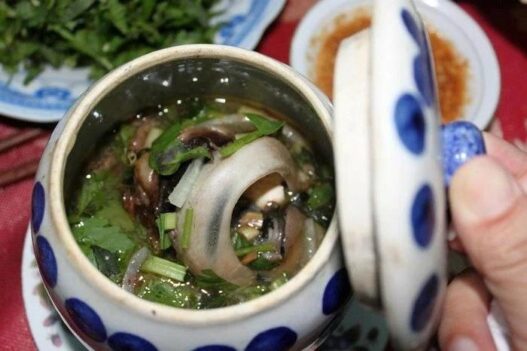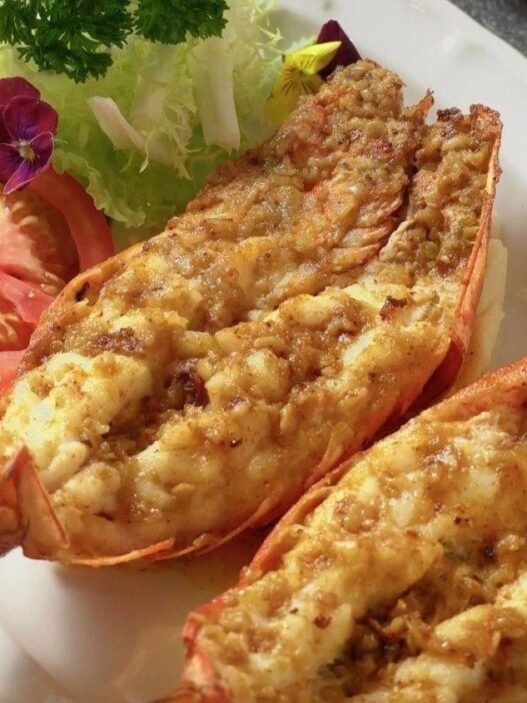A Dish That Stares Back at You
For someone who’s tasted lamb, pig, and even goat eyeballs, I thought no ocular delicacy could surprise me—until I found myself in an Osaka izakaya, face-to-face with a pair of tuna eyeballs, each nearly the size of a baseball.
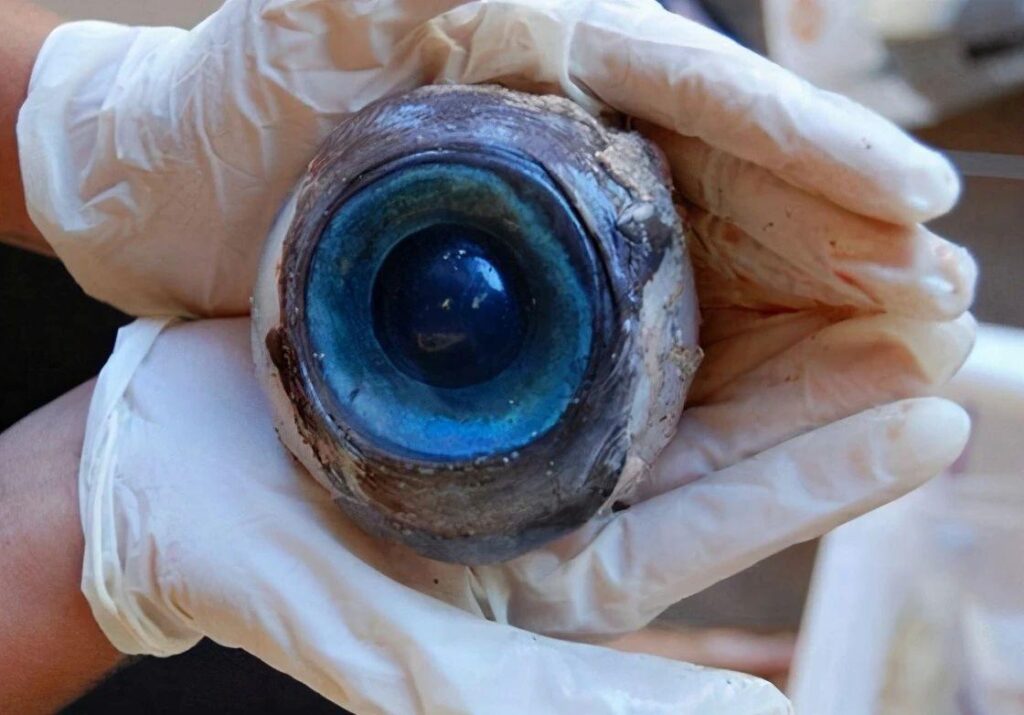
Blame it on the sake, but I’d momentarily forgotten Japan’s love for raw seafood, including tuna and, apparently, its eyes. When the plate arrived, two glossy spheres, each over 9 centimeters in diameter, stared at me like something from a sci-fi horror film. It wasn’t just food—it was an anatomical display straight off a medical dissection table.
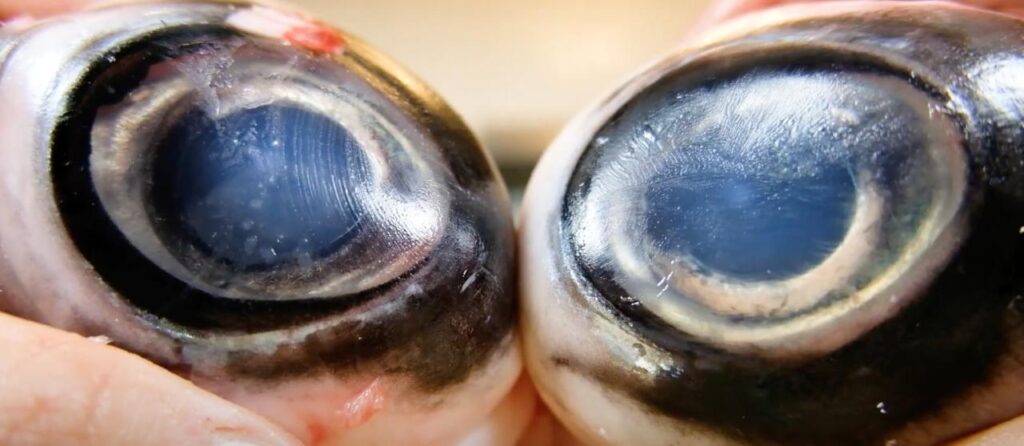
Why Are Tuna Eyeballs So Huge?
These weren’t ordinary tuna eyes—they came from the bigeye tuna, a species known for its impressive size, reaching up to 2.5 meters in length. The name “bigeye” isn’t just catchy—it’s literal.
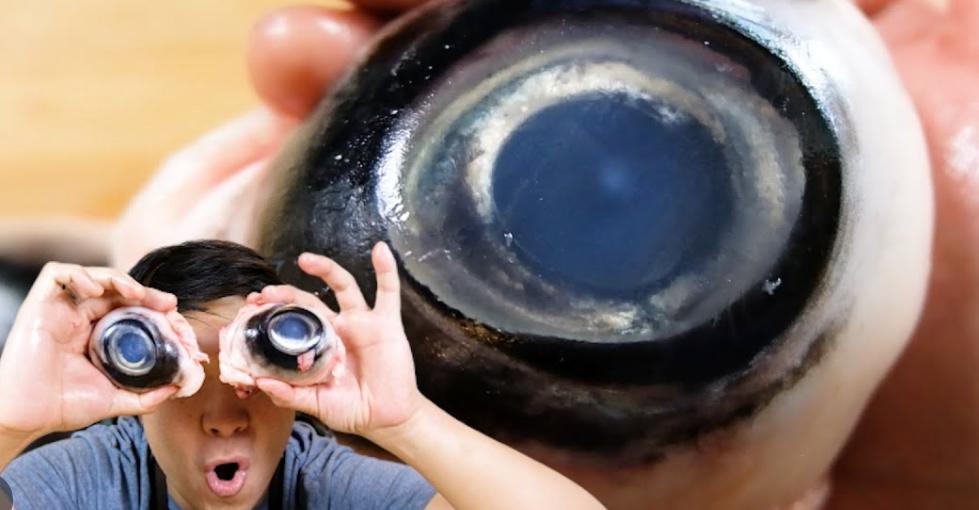
Imagine sitting down to dinner, only to find two eyes larger than Dwayne Johnson’s fists glaring at you from the plate. It’s not just surreal; it’s downright Lovecraftian. You can’t escape the feeling that you’re being watched, judged, and silently challenged.
My Japanese friend, ever the enthusiast, slid a fork and spoon toward me. “It’s like eating a security camera,” I joked. “Maybe after this, I’ll see into the future.”
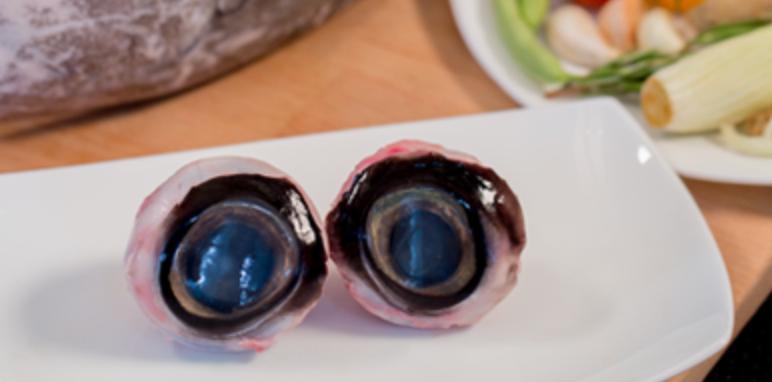
Anatomy Lesson on a Plate: How to Eat a Tuna Eyeball
Unlike pig or lamb eyes, a tuna eyeball is far too large to pop into your mouth whole. Eating one is more like performing surgery—an educational experience in fish anatomy.
Step 1: Using a knife, carefully slice along the cornea and pupil, much like lifting the lid off a teacup.

Step 2: Scoop out the lens—the so-called “Tuna Tear.” Some Japanese foodies even soak it in sake for an added kick.
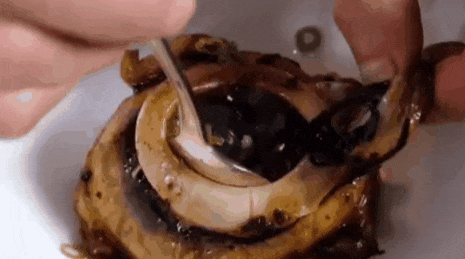
Step 3: Dig into the vitreous humor, aqueous fluid, and surrounding muscles. Each bite offers a different texture, from chewy to gelatinous.

My friend compared the taste to “fish-flavored grapes.” I wasn’t convinced, but curiosity pushed me forward. With the sake clouding my judgment, I took my first bite.

Tasting the Abyss: What Does a Tuna Eyeball Taste Like?
The moment the eye touched my tongue, I was hit with a wave of briny, gelatinous textures. It was salty, sticky, slippery, and strangely elastic—all at once. The cornea had a cartilage-like crunch, while the vitreous body oozed like warm jelly. Only the sake helped wash down the unfamiliar consistency.
My mind flashed back to my university days, watching my med-student girlfriend dissect cadaver eyes with the same focused intensity. Now, across the table, my Japanese friend was watching me with the same fascination. “Welcome to the real taste of the sea,” he said, raising his glass.
Cooked vs. Raw: Is It Better Warm?
To cleanse my palate from the raw experience, I later tried tuna eyeballs prepared in various ways: steamed, braised, grilled, and pan-fried. Surprisingly, cooking made all the difference.
Teriyaki Tuna Eye: Glazed in soy sauce, the eyeball retained its structure while losing much of its fishy smell. The sclera (white outer layer) even served as a natural “bowl” for the savory liquid.
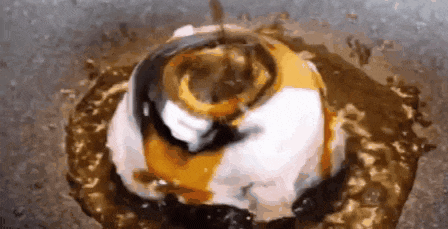
Steamed Eyeball: Soft, delicate, and less intimidating, with the collagen-rich liquid tasting like a hearty fish broth.

Grilled: This was my favorite—slightly charred on the outside, with a smoky aroma that masked the more pungent fishiness.

The key, according to seasoned eyeball eaters, is to chew slowly. “The longer you savor it,” one enthusiast advised, “the more layers of flavor you’ll uncover. If you swallow too fast, you’ll miss the umami journey.”
Nutritional Goldmine or Health Hazard?
Beyond the culinary adventure, tuna eyeballs are packed with omega-3 fatty acids, known for promoting heart health and reducing inflammation. My friend proudly declared the eyeball “the king of fish nutrition,” claiming it could prevent arrhythmias.
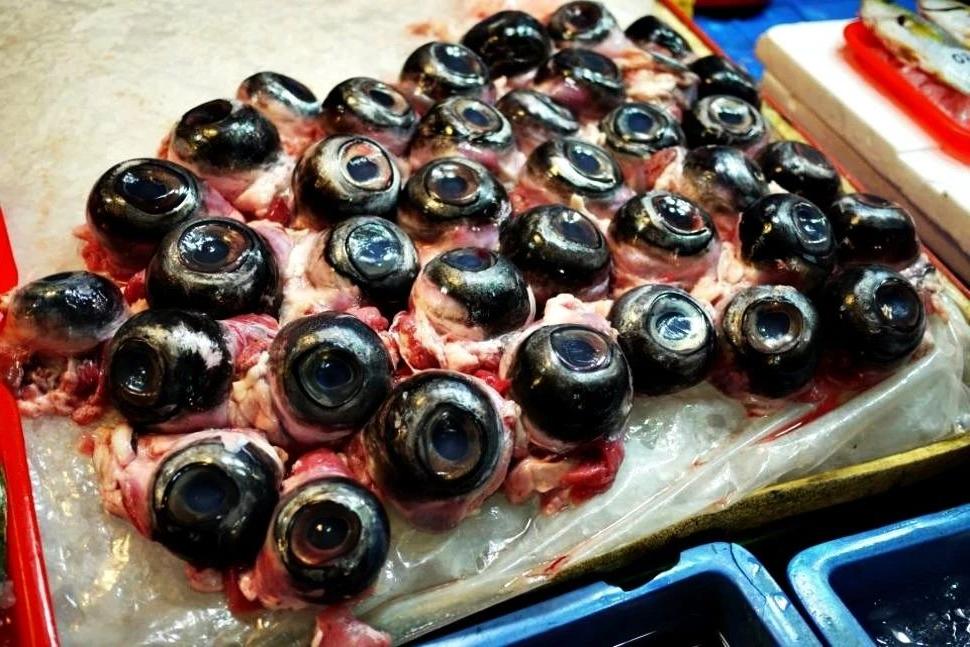
Ironically, it first causes your heart to race (thanks to the horror factor) before calming it down with its nutritional benefits—like a bizarre carrot-and-stick approach to cardiovascular health.
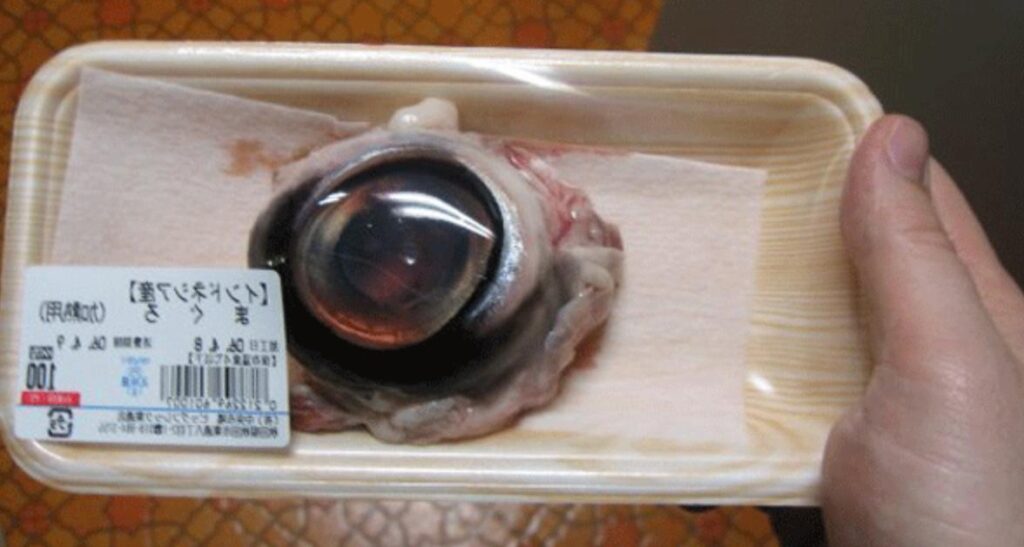
However, there’s a catch. Eating raw tuna eyes isn’t mainstream in Japan anymore due to potential bacterial contamination. My friend only revealed this after I had devoured mine, casually suggesting I “drink more sake to kill the germs.”
From Japan to Vietnam: A Cross-Cultural Delicacy
While Japan might be the most famous for its eyeball cuisine, it’s not the only country with a taste for tuna eyes. In Vietnam, particularly in Phu Yen, tuna eye soup is considered a delicacy.
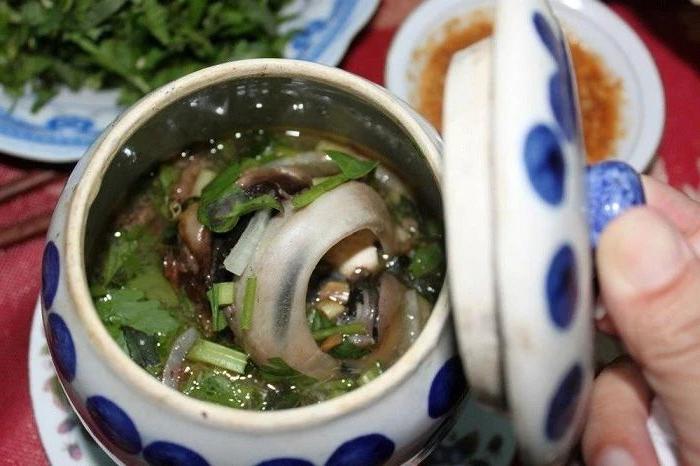
There, the eyes are simmered in ceramic bowls with herbs and spices, creating a rich, aromatic broth. Locals describe it as “simmering a universe in a pot”—a chaotic blend of flavors without borders or definitions.
The Final Verdict: Should You Try It?
Eating tuna eyeballs isn’t just about flavor; it’s about the experience—the thrill of facing something alien, conquering your hesitation, and discovering that yes, you can stomach the stare of the deep sea.
If you’re planning to try it, remember three golden rules:
- Choose cooked over raw unless you trust the source.
- Pair with strong sake to cleanse the palate and, apparently, the bacteria.
- Chew slowly to appreciate the full texture and flavor spectrum.
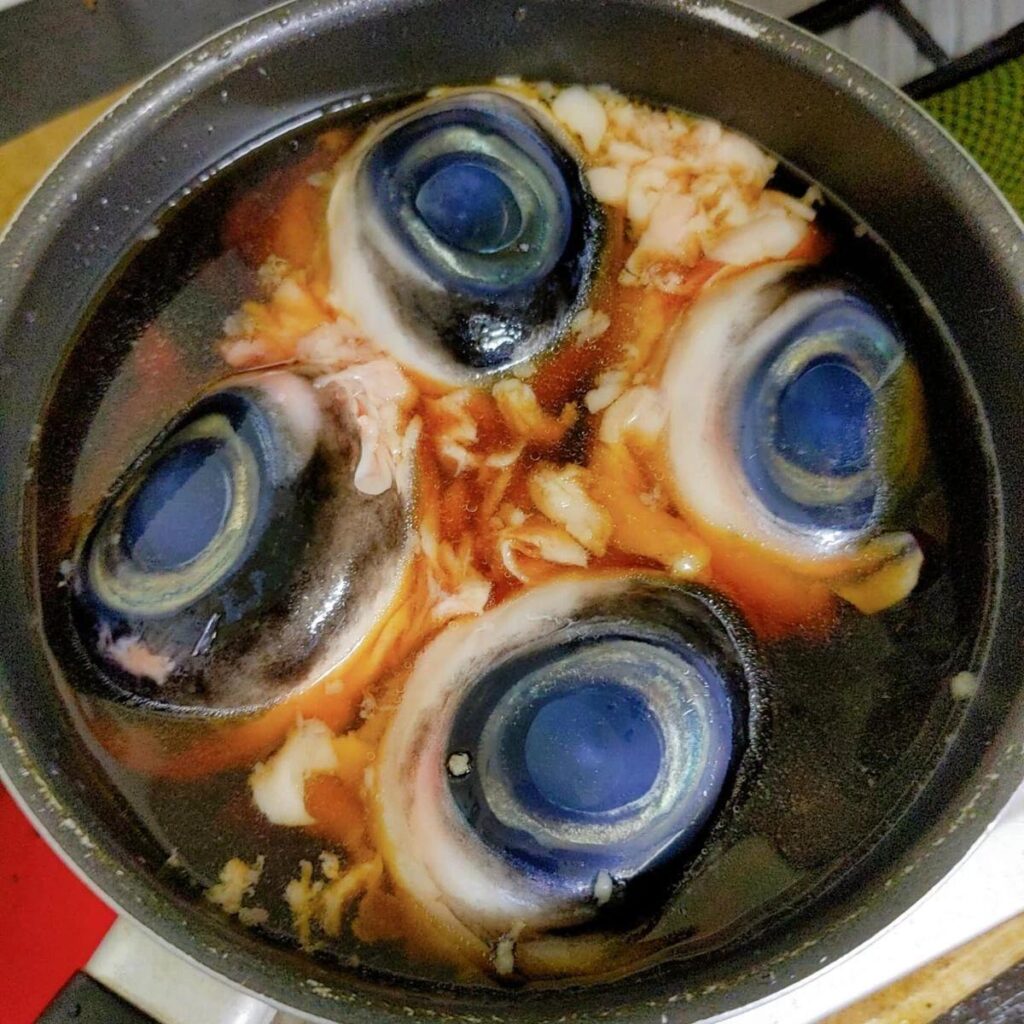
In Japan, a single tuna eyeball costs as little as 100 to 400 yen (roughly $1 to $3), making it an affordable adventure for the daring foodie. You’ll find them chilling on ice in most supermarket seafood sections, silently judging passersby.
So, are you brave enough to face the eye of the ocean? If you do, don’t forget the sake—you’ll need it.







